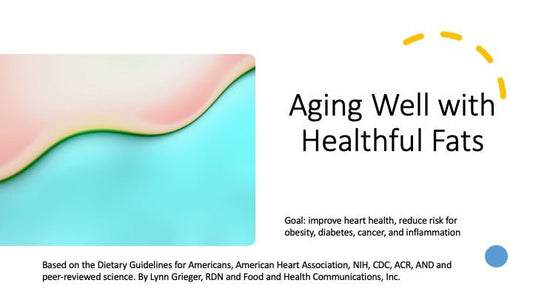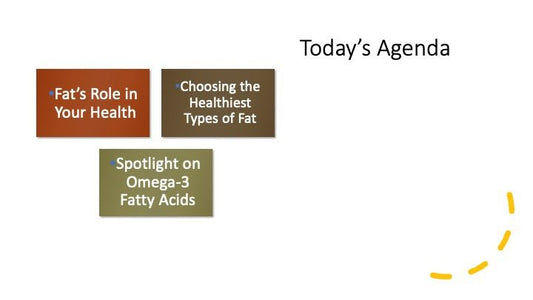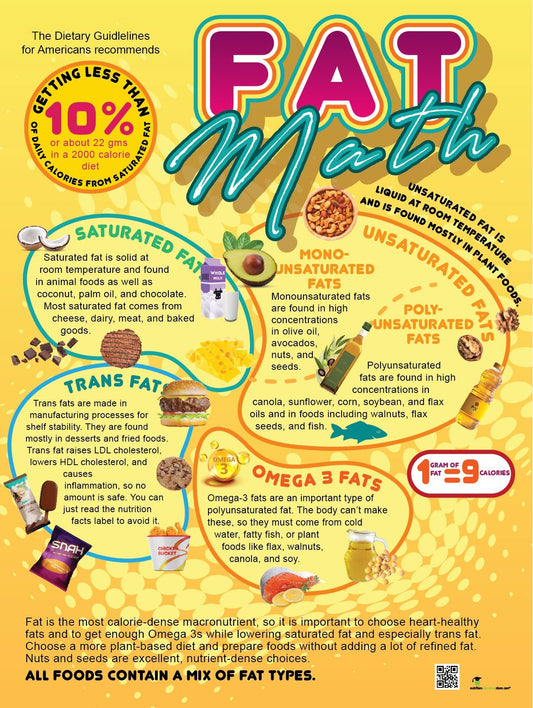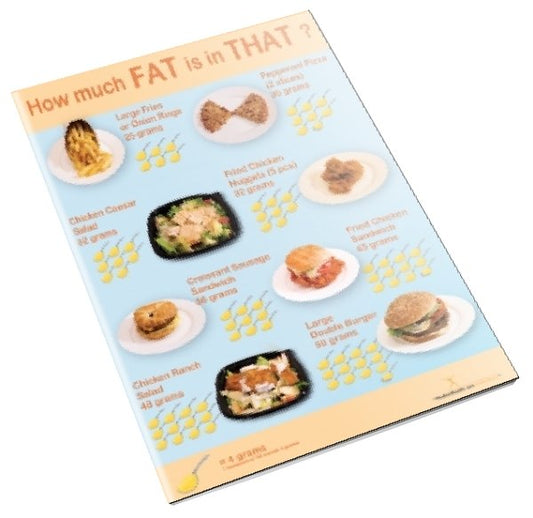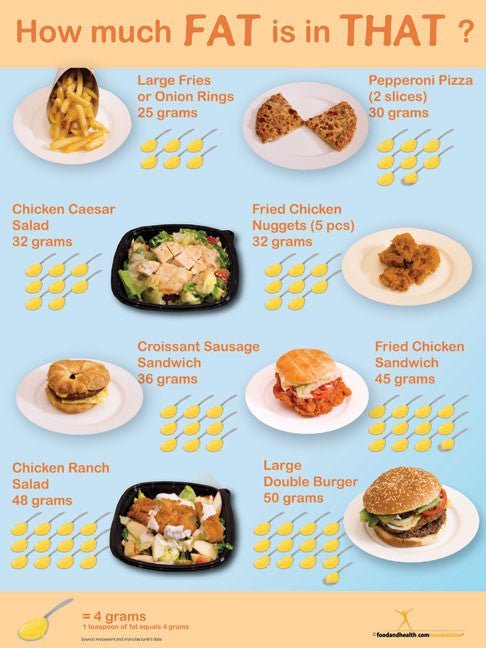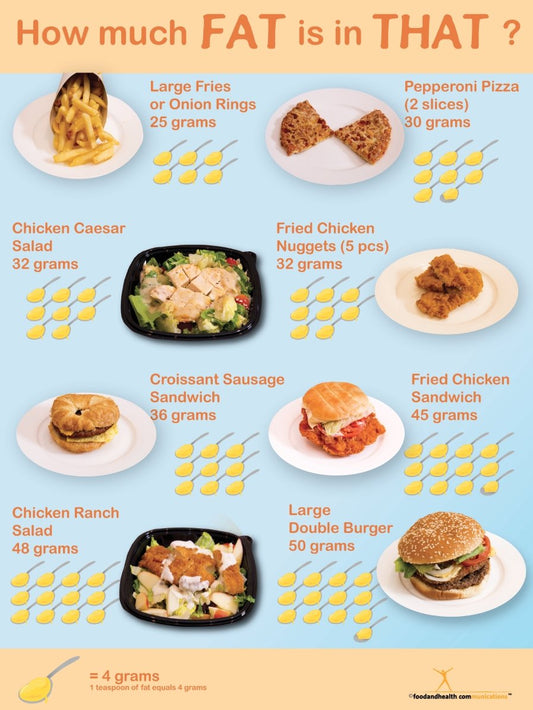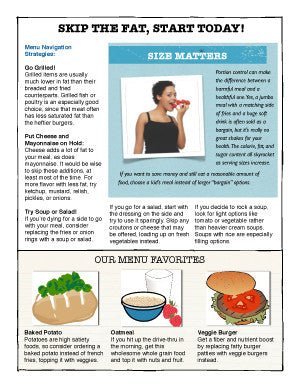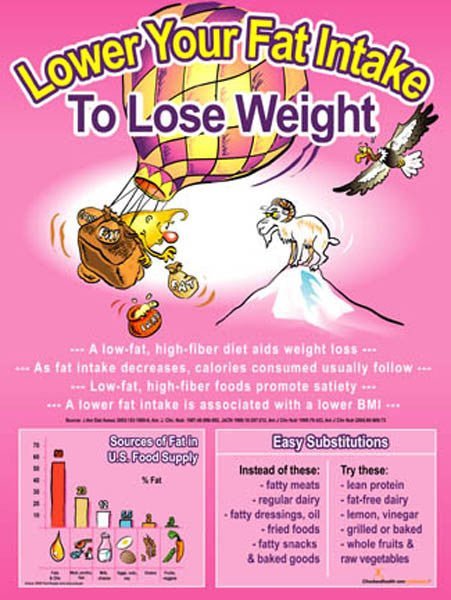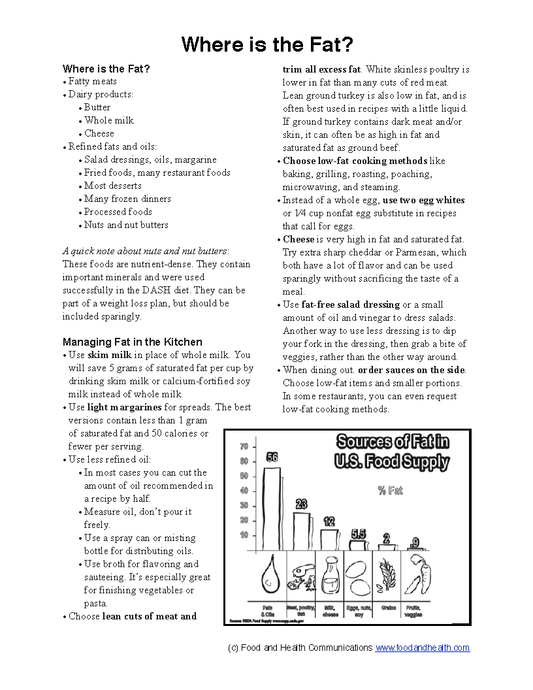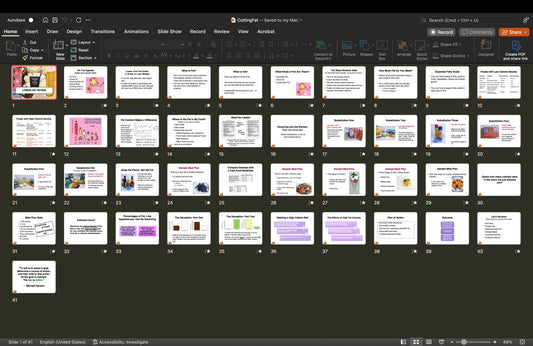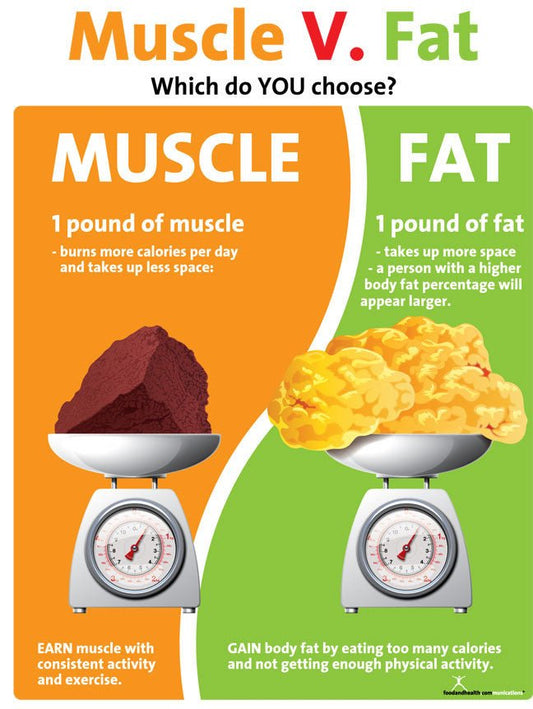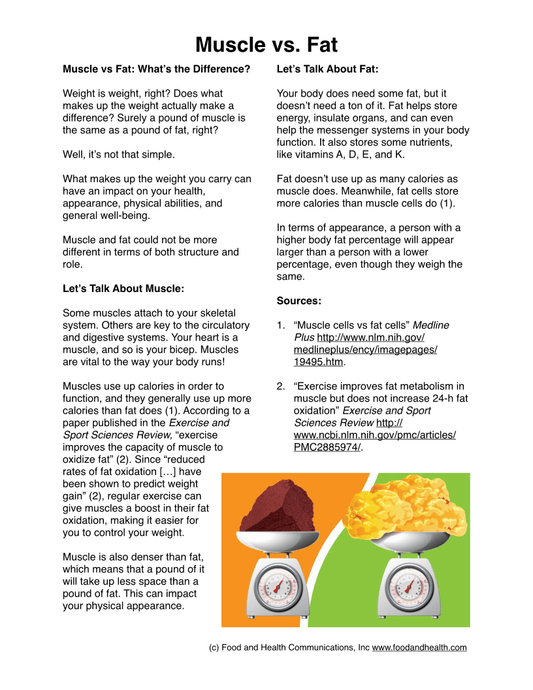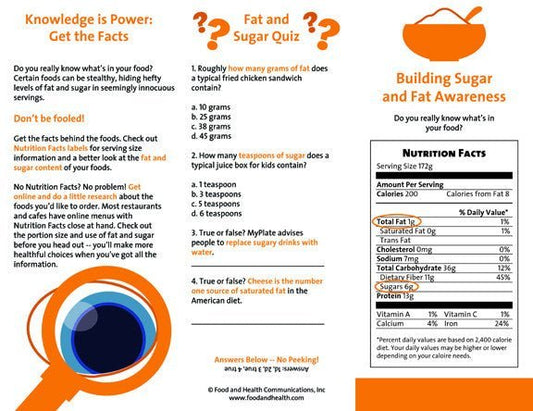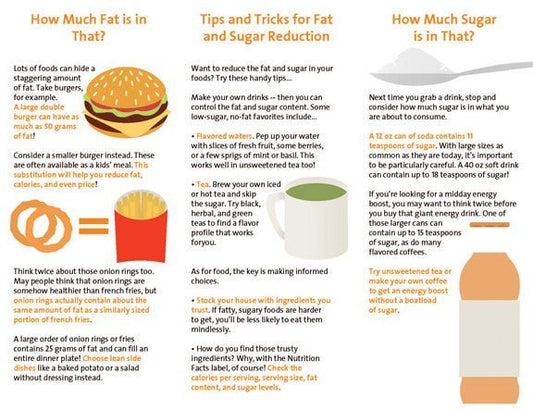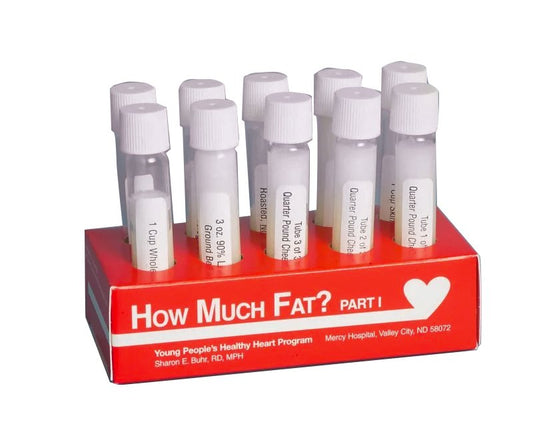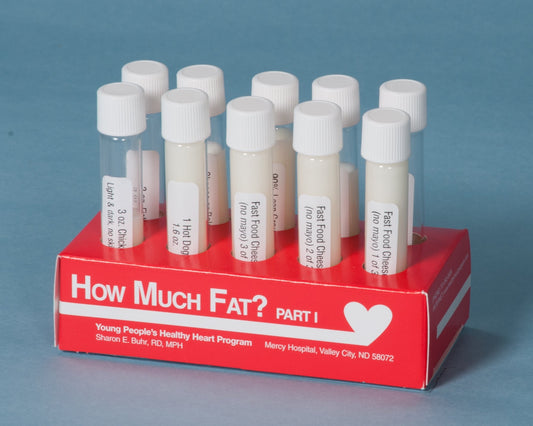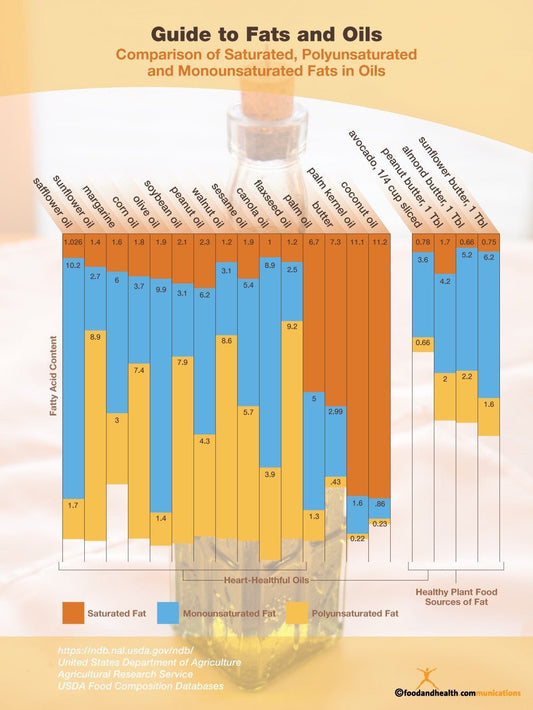Guide to Fats and Oils Poster 18" X 24"
This 18" X 24" laminated poster provides a visual comparison of commonly used oils and fats with regards to their fatty acid content. It also makes a great classroom poster plus it can be used as a school cafeteria poster.
The visual shows that many plant based oils are low in saturated fat while some are even higher in saturated fat than butter, even though they are touted as healthful by some media personalities and fat diet creators who are not dietitians.
Better still, individuals can see that there are healthy plant food sources of fat.
Our newsletter writer, Lynn Grieger, RDN, CDE, CPT, CHWC, requested, "Judy, I’m working on a class presentation and looking for a comparison chart of the saturated, polyunsaturated and monounsaturated fat content of various oils that shows the percentages of each of these types of fats in 1 tablespoon of commonly used oils/fats like canola oil, coconut oil, butter, etc. Do you have anything like that? A poster or handout in color would be great."
Lynn provided us with the information for the chart and she included avocado because so many people use it in large amounts. She even listed the URL for the USDA database which we have shared on the poster.
So we created it for her and added it to the Nutrition Education Store for all of our wonderful clients. She wrote this article to use with this poster:
All Fat Isn't Created Equally
Per tablespoon, all types of fat contain the same number of calories, 120 per tablespoon. The building blocks of fats and oils are fatty acids, and the combination of various types of fatty acids determines whether or not the oil promotes health or increases risk of heart disease. There are three primary types of fatty acids: saturated, polyunsaturated, and monounsaturated.
Even if high school chemistry made you break out in a sweat, understanding the basic chemical structure of fatty acids will help you understand why some types of fats are healthier than others. All types of fats are built on a carbon atom chain. If all of the bonds between carbon atoms are single bonds, the fatty acid is called saturated. If there is one double bond, the fatty acid is monounsaturated. If there is more than one double bond, the fatty acid is polyunsaturated.
All oils and fats in foods are composed of several different types of fatty acids. Foods higher in saturated fatty acids tend to be solid at room temperature while foods high in polyunsaturated and monounsaturated fatty acids are liquid at room temperature. Saturated fatty acids also seem to increase the risk of cardiovascular disease, while polyunsaturated and monounsaturated fatty acids tend to decrease the risk of cardiovascular disease.
The following chart clearly shows the different amounts of saturated, polyunsaturated, and monounsaturated fatty acids in commonly used oils as well as some foods that are high in total fat content. The 2016 Dietary Guidelines for Americans recommends using more liquid oils than solid fats when preparing foods, such as replacing butter with canola oil; and choosing salad dressings made with liquid oils instead of solid fats.
The American Heart Association recommends limiting saturated fat intake to no more than 5-6% of total calorie intake. If you consume 2000 calories per day, aim for no more than 11-13 grams of saturated fatty acids per day. Replace foods high in saturated fatty acids with foods that contain more polyunsaturated and monounsaturated fatty acids to decrease risk of cardiovascular disease. For example, palm kernel oil is much higher in saturated fatty acid than olive oil, so olive oil is a healthier choice.
What about trans fatty acids?
Very small amounts of trans fatty acids are naturally present in some foods. The bulk of trans fatty acids in our foods, however, are created during hydrogenation, a process that adds hydrogen to liquid vegetable oils to make them more solid. When you see the words “partially hydrogenated oils” on the list of ingredients, you know the food contains trans fatty acids. The Dietary Guidelines recommend limiting trans fatty acids to the lowest possible amount for overall good health.
By Lynn Grieger, RDN, LDN ©Food and Health Communications, Inc. All Rights Reserved.
References:
Chemical of the Week. Fats and Oils. http://scifun.chem.wisc.edu/chemweek/pdf/fats&oils.pdf accessed September 21, 2016. Updated January 30, 2008.
Dietary Guidelines for Americans 2015-2020. https://health.gov/dietaryguidelines/2015/guidelines/ Accessed September 21, 2016.
American Heart Association. Know Your Fats. http://www.heart.org/HEARTORG/Conditions/Cholesterol/PreventionTreatmentofHighCholesterol/Know-Your-Fats_UCM_305628_Article.jsp#.V-MZCfArL4c Updated March 28, 2016. Accessed September 21, 2016.














